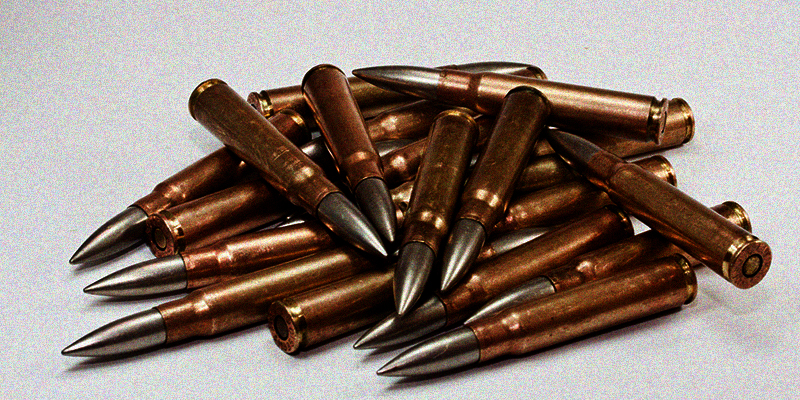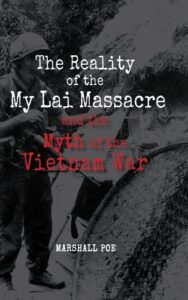Here are the undisputed facts. On March 15, 1968, Lieutenant Colonel Frank Barker ordered Captain Ernest Medina to lead his company of about 100 men in an attack on the village of My Lai (4) in Quang Ngai province, South Vietnam. At 8:00 am of March 16, 1968, Medina’s company assaulted the village. In a little over an hour, the Americans killed somewhere between 100 and 500 Vietnamese civilians and committed several rapes.
There is simply no doubt that this was a “war crime” under any definition. Why did it occur? The American military did not order the massacre. Quite the contrary, the US Army in Vietnam was very concerned with avoiding civilian causalities (and remains so today). The brass issued complicated “Rules of Engagement” that were solely designed to prevent civilian causalities. Everyone from field officers to grunts were required to learn them. When they were violated (and they were), the Army conducted investigations to see what went wrong. If criminal culpability could be shown, the Army brought charges.
Frank Barker and Ernest Media knew the regs. They did not attack My Lai on March 16, 1968 with the intention of slaughtering Vietnamese peasants. But that’s what happened. Why? To answer this question, one needs to understand two things: that the US was fighting a “war of occupation” in Vietnam and the particularities of the My Lai operation of March 16, 1968.
After the Second World War, the Great Powers began to engage in a series of “small wars.” They are well known: the French in Vietnam, the British in Malaysia, the French in Algeria, the Americans in Vietnam, the Soviets in Afghanistan, the Americans in Afghanistan, and the Americans in Iraq (twice). They did not—and could not—fight these wars as they fought World War II. There would be no great clash of armies in huge battles. Rather, they would be fought by new kinds of specially trained soldiers (e.g., “Green Berets”) who used the sophisticated techniques of “counter-insurgency warfare” to fight “guerillas” or “insurgents.”
That was the idea, anyway. In fact, what happened is that the Great Power simply invaded the target country. In 1968, for example, the US had over 500,000 military personnel in Vietnam. Once “in country,” the Great Power always did the same thing: set up strongpoints (“firebases”) where troops could be relatively safe; sally out of those strongpoints to engage and defeat the “insurgents”; create larger and larger pacified areas (“inkspots”); and generally try to convince the locals that you are there to help them (“winning hearts and minds”).
The trouble is it never worked. The incomplete list given above—Vietnam, Malaysia, Algeria, Afghanistan, Iraq—is a list of military and human tragedies. None of these conflicts ended well. Why is this?
The reason is that the Great Powers were not, despite what they claimed, fighting “counter-insurgency wars.” Rather, they were fighting what should be called “wars of occupation.” We don’t ordinarily think of these post-World War II conflicts in these terms. The brutal, imperialistic Nazis, we think, occupied countries. We don’t. We try to aid other countries by supporting the “good guys” militarily. The “bad guys” are the “insurgents,” and we are there to help kill them. Our intentions are good. So were Frank Barker’s and Ernest Media’s on March 16, 1968. They were there to help.
But the fact is that the Great Powers were occupiers. The residents of the countries invaded (Vietnam, Malaysia, Algeria, Afghanistan, Iraq) were never given the memo that the foreigners were there to help them by killing “insurgents.” Rather, they saw a foreign power invading their country, a country that may not be perfect but was theirs. Naturally, they took offense at this affront. What were these foreigners doing in their country? These well-armed strangers say they are here to help, but they seem to be killing a lot of us and blowing stuff up. It’s little wonder, then, that the occupied—regardless of their politics—came to see the foreign troops for what they were: occupiers. They resisted the foreign troops in a great variety of ways, some rather casual (not giving information about the whereabouts of armed guerillas) and others deadly (planting mines, sniping, joining the guerilla forces). Nearly all of them, however, wanted the foreign troops out.
Frank Barker—and US ground forces in general—were sent to fight insurgents, namely the Viet Cong and their allies he North Vietnamese. But what they discovered was that they were, at least in Quang Ngai province, fighting the nearly entire hostile, alienated Vietnamese population. This realization is reflected in the way the soldiers spoke about the residents of Quang Ngai province when interviewed by the Army after the massacre. When asked why they killed civilians, they would routinely ask their interlocutor how they knew they were civilians. They would point out that these “civilians” were dangerous, as was shown by the numerous causalities they suffered from sniping and mining. And they did not refer to them not as “civilians,” but rather “VC sympathizers.” From the point of view of soldiers fighting in Quang Ngai, there were no safe Vietnamese.
Barker understood the situation and it worried him. He knew that any operation ran the risk of civilian casualties simply because his men viewed the local population as “VC sympathizers.” If he was to have any chance at achieving his mission—killing the VC proper—the Vietnamese peasants had to be removed, thus leaving only the VC.
It was for this reason that in the run up to the March 16th operation he asked the South Vietnamese authorities to remove all the civilians from My Lai (4). The South Vietnamese told Barker that removing the civilians from My Lai (4) was impossible. That might have been the end of it; Barker could have called off the assault. But he, being an ambitious officer trying to “make rank,” decided to proceed anyway. And he did so on the basis of two bits of “intelligence,” both of which proved to be entirely inaccurate and possibly made up. First, his intelligence officer, Captain Eugene Kotouc, told him that the entire 48th VC Battalion was in and around My Lai in heavily fortified positions. They were not. Second, Kotouc told Barker that all the Vietnamese civilians would be “at market” outside My Lai (4) on the morning of March 16th. This, of course, was ridiculous, as later Army investigators pointed out.
Everything Barker did thereafter suggests that—remarkably—be believed what Kotouc said about the situation in My Lai. On March 15th during the briefing, Barker told Medina that My Lai (4) was essentially a VC fortress and, significantly, that there would be no Vietnamese civilians present. In his own briefing to his platoon commanders—one of whom was Second Lieutenant William Calley—Medina told his men to kill everyone in the village—permissible because there were no civilians—and destroy everything they found—permissible because it was a VC fortress.
When the Medina’s troops landed outside My Lai on the morning of March 16, they did not encounter the expected VC force in the village. There were a few armed VC in the area, but the 48th VC Battalion was not there. This, too, might have been the end of it; Barker could have ordered his men to search the village and leave. But Barker ordered an assault. The men of Medina’s C company attacked the village and the massacre ensued. It’s important to recognize that different men acted differently during the slaughter. Many, seeing that the residents of My Lai were at best innocent peasants and at worse “VC sympathizers,” refused direct orders to fire. Others—and William Calley is the primary example—conducted organized executions of at least two groups of Vietnamese.
One might well ask whether war crimes are the inevitable companion of war. I do not know the answer to that question. But the tragedy of the My Lai massacre suggests that they are the likely companion of what I have called “wars of occupation” such as those fought by the US in Vietnam, Iraq, Afghanistan, and even today in Syria. It’s really as simple as this: if you invade and occupy another country, the citizens of that country are—to one degree or another—going to turn against you. They will—whatever their politics—want you to leave, and they will take measures to see that you do. They will not all be armed guerillas, but they will nearly all be hostile. This fact—near universal hostility—will make it very difficult for troops in the field to make distinctions between “combatants” and “civilians.” Of course, this is not to excuse any of the perpetrators at My Lai (4); they committed murder and escaped justice. But it is to say that where the boundaries between “combatants” and “civilians” are unclear, as in wars of occupation, officers and soldiers are at great risk of making deadly mistakes. Some of these mistakes will, inevitably, result in war crimes.
***


















